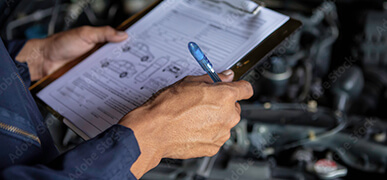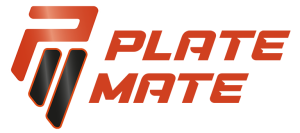
What Number Plates Are Legal and Illegal?

What Number Plates Are Legal and Illegal?
There’s a fine line between what makes a number plate legal and illegal. You might want to give your car or bike a sleek, modern look, or maybe you’ve seen a few bold 5D plates online and wondered if they’re allowed.
The truth is, not every number plate style you see on the road is legal. And with new rules like BS AU 145e, it can be tricky to keep up with what’s allowed and what isn’t.
In this guide, we’ll break down exactly what makes a number plate legal (and illegal) in the UK, so you can upgrade your plate with confidence.
What Makes a Number Plate Legal in the UK?
There are a few rules to follow. First, to be legal for road use, your number plate has to meet DVLA and British Standard (BS AU 145e) regulations. These rules are there to make sure your plate can be easily read by both people and ANPR cameras in rain, snow and, well, all conditions.
Here’s what every road-legal number plate must include:
- Correct font – Plates must use the official Charles Wright font, this means no italics, bold, or fancy lettering.
- Proper spacing and sizing – Each letter and number must have standard spacing and sizing. Changing the layout to make a word or name will make your plate illegal.
- Reflective material – Plates must be made from reflective materials (white at the front and yellow at the back) with black characters only.
- Supplier details and BS mark – Every legal plate includes the maker’s details and the BS AU 145e mark, showing it meets DVLA standards.
- Secure fitting – Your plate should be fixed securely, flat against the vehicle, and clearly visible (not folded, tinted, or obstructed).
At Plate Mate, all our number plates tick every one of these boxes, so you’ll never need to second-guess whether your plate is compliant.
Common Things That Make a Plate Illegal
It’s surprisingly easy for a number plate to fall outside DVLA rules, especially if you’ve made small design tweaks. Even a slight font change or a tinted background can make it illegal for road use.
Here are some of the most common reasons a number plate becomes illegal:
- Wrong font or altered spacing – Trying to make your plate spell a word or name by moving letters closer together breaks the law.
- Coloured, shaded, or tinted backgrounds – Only plain white (front) and yellow (rear) are allowed. No dark tints or colour gradients.
- Missing legal markings – If your plate doesn’t show the maker’s name and BS AU 145e code, it won’t pass an MOT.
- Fancy or non-reflective materials – Carbon fibre effects, mirrored finishes, and neon colours might look great, but they’re not legal.
- Damaged or dirty plates – If your plate is cracked, faded, or covered in dirt, it’s not roadworthy.
Remember: even small changes can lead to a fine or MOT failure. If you want to experiment with fonts, colours, or styles, a show plate is the way to go, not for the road, but perfect for displays or garage use.
Are 3D and 4D Number Plates Legal?
We actually cover this in more detail over on our ‘Are 3D Number Plates Legal?’ article. And, it’s still one of the most common questions we hear.
In short, both are perfectly fine to use as long as they meet the DVLA rules.
Here’s the difference between the two, and what makes them road-legal:
3D Plates
3D plates use slightly raised gel lettering that gives your plate a softer, domed look. They’re legal as long as:
- The letters use the Charles Wright font
- The background is reflective white (front) and reflective yellow (rear)
- The plate includes the supplier name and BS AU 145e mark
4D Plates
These use laser-cut acrylic letters for a sharp, modern, block-style finish.
They’re also legal when they meet all the same DVLA and British Standard conditions above.
So, 3D and 4D plates are both road-legal when made correctly. But not all suppliers follow the rules, so it’s worth buying from a trusted plate maker (like us!) to make sure your plate passes MOTs and road checks.
What About Show Plates?
No, show plates are not for the road. They’re designed for car shows, exhibitions, photography, garage décor, or anything that doesn’t involve public roads.
Basically, you can design your show plate without worrying about DVLA rules.
The only thing to remember is that you can’t use a show plate while driving on UK roads. Doing so could lead to a fine or MOT failure.
If you want something bold and unique for your collection or display, though, show plates are perfect.
Penalties for Using Illegal Plates
The DVLA (and police) take number plate rules seriously. Here’s what can happen if your plate doesn’t meet legal standards:
- Instant £100 fine – For having incorrect font, spacing, or missing markings.
- MOT failure – Illegal or damaged plates won’t pass an MOT inspection.
- Withdrawal of registration number – In serious cases, the DVLA can reclaim your registration.
- ANPR issues – Incorrect plates might not be recognised by traffic and toll cameras, leading to fines or errors.
The good news is it’s easy to avoid all that. If you buy your plate from a trusted supplier who follows the BS AU 145e standard, you’ll always stay on the right side of the law.
Are Dirty or Obstructed Number Plates Illegal?
Yes, they are. Even if your number plate was perfectly legal when fitted, it can become illegal if it’s dirty, obscured, or damaged to the point that it can’t be read properly.
It doesn’t take much, a layer of mud, a bike rack, or even a tinted cover can make your registration unreadable to both the police and ANPR cameras.
You can be fined up to £100 for driving with a plate that’s unclear or obscured, even if it’s only temporary. It’s always worth giving your plate a quick wipe before setting off, especially during the winter months when grime builds up fast.
What Are Ghost Number Plates?
Ghost number plates are a type of illegal number plate designed to evade detection by ANPR (Automatic Number Plate Recognition) cameras. They use reflective or light-bending materials that make them appear invisible to cameras, while still being visible to the human eye.
While these might sound high-tech or appealing to some, they are strictly against DVLA regulations and can result in severe penalties.
Again, only number plates that meet BS AU 145e visibility and reflectivity standards are legal for UK road use. Anything that intentionally interferes with readability is not permitted.
Need a Set of Number Plates?
You can buy road-compliant number plates from Plate Mate quickly and easily. We require no documents and with Express 1-2 Day UK Delivery, you’ll have your plates with you in no time.




